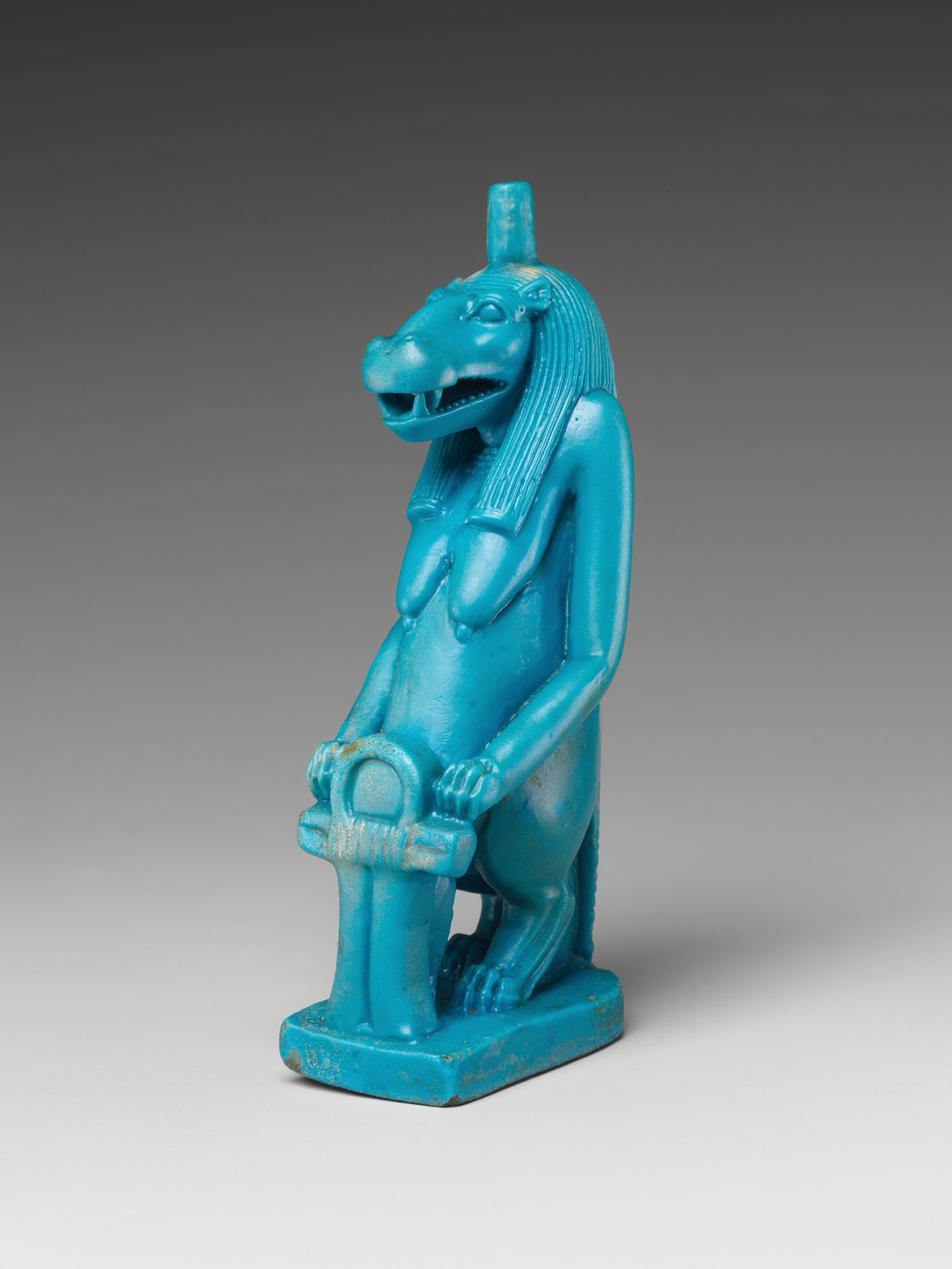 It's no secret that I love the TV show LOST. During the past couple seasons, ruins of a four-toed statue have been shown on the LOST island, but a full depiction of the mysterious statue was not shown until last season - and it can be deduced that the original statue on the island is a depiction of Taweret, the Egyptian goddess.
It's no secret that I love the TV show LOST. During the past couple seasons, ruins of a four-toed statue have been shown on the LOST island, but a full depiction of the mysterious statue was not shown until last season - and it can be deduced that the original statue on the island is a depiction of Taweret, the Egyptian goddess.I know that I just barely did a post on ancient female fertility figurines, but I'm going to continue in this vein and talk about Taweret statues too. Taweret is the goddess who protects women who are pregnant or in childbirth. (If you watch LOST, you can see how the destruction of this statue ties into the problems women experience with pregnancy on the island.) The figurine on the left (assumed to be Taweret) is from the Ptolemaic Period (ca. 332-30 BC).1 The combination of human, crocodile, lion and hippopotamus features create a fearsome combination - Taweret was supposed to scare off demons and other deadly creatures that posed a threat to the mother and baby during childbirth.
Egyptian women also wore Taweret amulets to protect them during childbirth. I particularly like this one.
 And sorry if you don't like depictions of childbirth, but I had to include this interesting relief from the Temple of Hathor at Dendera (ca. 304-30 BC; Egyptian Museum, Cairo). This relief shows a squatting woman in childbirth (using a birth stool), while being assisted by two goddesses (possibly Hathor and Taweret, although I don't think either figure distinctly looks like Taweret). It's an interesting relief, though, huh? It's thought that this birth position was an alternative, possibly less-frequent method that the ancient Egyptian woman used for childbirth.2
And sorry if you don't like depictions of childbirth, but I had to include this interesting relief from the Temple of Hathor at Dendera (ca. 304-30 BC; Egyptian Museum, Cairo). This relief shows a squatting woman in childbirth (using a birth stool), while being assisted by two goddesses (possibly Hathor and Taweret, although I don't think either figure distinctly looks like Taweret). It's an interesting relief, though, huh? It's thought that this birth position was an alternative, possibly less-frequent method that the ancient Egyptian woman used for childbirth.2Anyhow, back to Taweret. So far, I have not found any information regarding the depiction of Taweret's breasts in art. Since Taweret also is linked to fertility, are the breasts a connection to that? I haven't read anything that specifically makes this connection, but perhaps that just can be assumed? Or perhaps the breasts were depicted to emphasize that this was a female goddess? What do people think?
From what I can tell, it seems like most depictions of Taweret are small figurines or amulets. I kind of doubt that there were any monumental statues created of this goddess (like the one shown in LOST). However, if you know of any monumental Taweret statues, let me know. I'd be interested to see them and find out why they were created on a monumental scale.
1 This statuette is part of the Metropolitan Museum of Art's collection. You can read more information about it here.
2 Eugen Strouhal, Evžen Strouhal, and Werner Forman, Life of the Ancient Egyptians (Vigo, Spain: Editorial Galaxia, 1992), 16-17. Since I have some friends who are fascinated by childbirth (cough, Pamy, cough), here is the link to these pages in a Google Book preview, in case you want to read more.